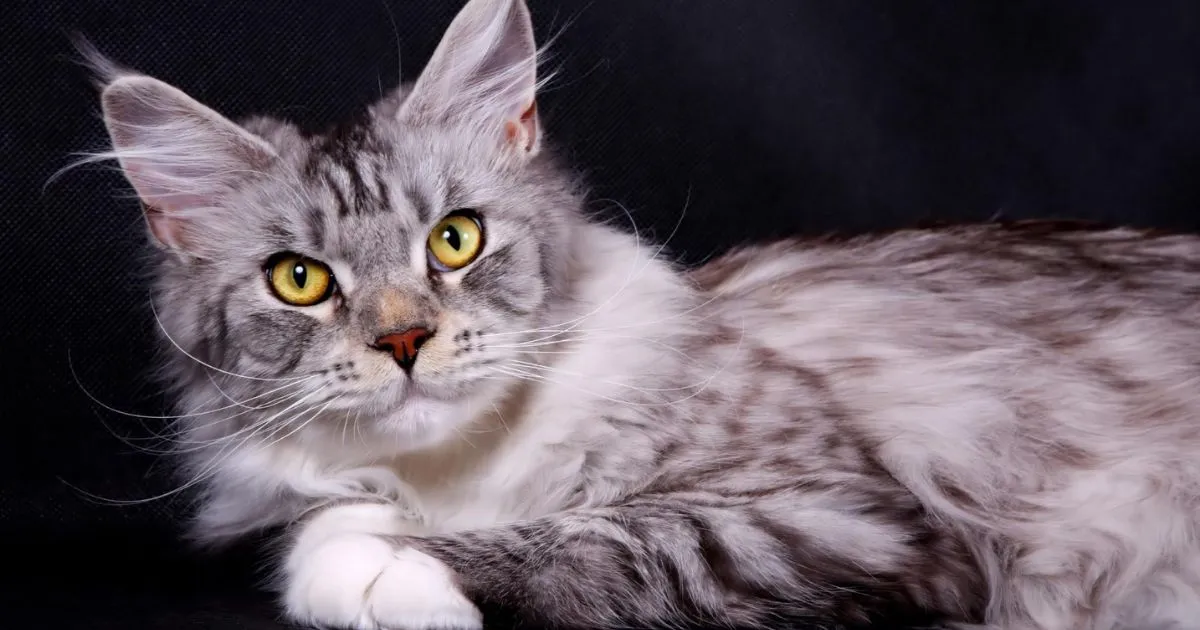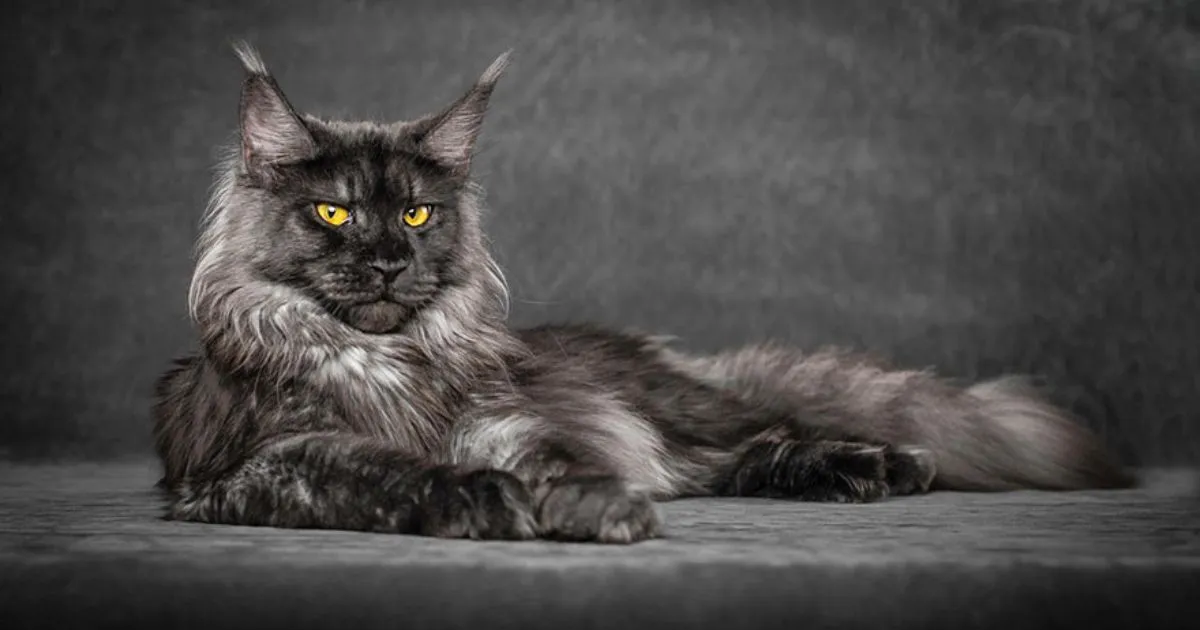Female Maine Coon

The Maine Coon breed is known for its large size, muscular build, and striking appearance. It originated in the United States and is renowned for its friendly and sociable nature. Among all cat breeds, the female Maine Coon holds the title of being the largest. This distinction adds to their allure and makes them a fascinating breed to study and appreciate.
Understanding the Female Maine Coon
Female Maine Coons are large and majestic cats with tufted ears, a thick double coat available in various colors, and long, bushy tails. They are a unique and striking breed that weighs between 8 and 18 pounds, and their physical characteristics make them fascinating and beautiful to admire.
-
Size and Weight
Female Maine Coons are typically larger and heavier than other cat breeds. They can reach lengths of up to 40 inches and weigh anywhere from 8 to 18 pounds.
-
Coat Texture and Color Variations
Maine Coons have a thick double coat that protects them from cold weather. They are available in a range of colours and patterns, such as solid, tortoiseshell, tabby, and more.
-
Distinctive Features: Tufted Ears, Bushy Tails
The tufted ears that give Maine Coons a regal appearance are one of their distinctive features. They also have long, bushy tails that serve as both a balancing tool and a source of warmth.
Temperament and Personality Traits
Female Maine Coons are known for their gentle and loving disposition. They often enjoy being around their human companions and are quick to show affection through rubbing and purring.
-
Playful and Sociable Behavior
Maine Coons are highly sociable cats and tend to get along well with other pets and children. They thrive on interactive play and enjoy engaging in activities that stimulate their minds.
-
Intelligence and Trainability
Female Maine Coons are intelligent creatures and can be easily trained. They are quick learners and can pick up commands and tricks with proper guidance and positive reinforcement.
History and Origins of the Maine Coon
There are numerous legends and folklore surrounding the origins of the Maine Coon breed. Some popular tales suggest that they are the result of a romantic encounter between a domestic cat and a raccoon.
-
Historical Context and Development in the United States
The Maine Coon breed evolved in the United States, particularly in the New England region. Originally, they served as working cats on farms, helping control vermin. Over time, they gained popularity as cherished companions.
-
Evolution from Working Cats to Beloved Companions
As their role shifted from working cats to beloved companions, Maine Coons underwent changes in their physical and behavioral traits to fit the expectations of their human guardians.
-
Recognition as an official Breed by Cat Associations
Maine Coons were officially recognized as a breed by cat associations in the late 19th century. This recognition helped preserve and promote the breed’s unique characteristics.
Factors Contributing to Size in Female Maine Coons
The size of female Maine Coons is influenced by genetic factors through selective breeding for desirable size traits. Proper nutrition, including a balanced and protein-rich diet, is essential for their growth, while environmental factors like space for exercise and mental stimulation can also impact their size and development.
-
Genetic Predisposition and Breeding Practices
The large size of female Maine Coons is partly attributed to genetic factors. Breeders carefully select parents with desirable size traits to continue producing larger offspring.
-
Nutritional Requirements and Dietary Considerations
Proper nutrition plays a crucial role in the growth and development of female Maine Coons. A balanced and protein-rich diet is essential to support their size and overall health.
-
Environmental Factors Influencing Growth and Development
The environment in which a Maine Coon grows can impact its size. Adequate space for exercise and opportunities for mental stimulation contribute to their physical development.
Female Maine Coon Care and Maintenance
-
Grooming needs: Brushing, Bathing, and Hygiene
Maine Coons require regular grooming due to their long and thick coats. Brushing their fur helps prevent matting and keeps their coat healthy. Occasional baths and proper hygiene practices are also necessary.
-
Dietary Requirements and Feeding Schedules
Providing a balanced diet that meets the nutritional needs of female Maine Coons is crucial. Feeding them at regular intervals ensures they maintain a healthy weight and receive essential nutrients.
-
Exercise and Mental Stimulation for a Healthy Lifestyle
Keeping female Maine Coons physically and mentally stimulated is important for their overall well-being. Engaging them in interactive play sessions and providing scratch posts and toys can help fulfill their need for exercise and mental stimulation.
Health Considerations for Female Maine Coons
Female Maine Coons can be prone to certain health conditions, including hip dysplasia, hypertrophic cardiomyopathy, and polycystic kidney disease. Regular veterinary check-ups and awareness of breed-specific health issues are crucial.
-
Regular Veterinary Check-ups and Preventive Care
Routine veterinary visits are essential for monitoring the health of female Maine Coons. Vaccinations, parasite control, dental check-ups, and preventive care measures can help prevent potential health problems.
-
Importance of Vaccinations and Parasite Control
Vaccinating female Maine Coons is crucial to protect them from common feline diseases. Regular deworming and flea/tick prevention help maintain their overall health and well-being.
Female Maine Coons as Family Pets
Female Maine Coons are generally adaptable and can thrive in different living environments, including apartments or houses. However, providing enough space for their size and activity level is important.
-
Interaction with Children and other Pets
Because of their outgoing personality and reputation for friendliness, female Maine Coons are excellent companions for kids and other animals. Proper socialization and supervision are necessary for harmonious interactions.
-
Tips for Creating a Cat-friendly Home Environment
Creating a cat-friendly home environment involves providing vertical spaces for climbing, scratching posts, hiding spots, and interactive toys. Ensuring a safe and stimulating environment helps meet the needs of female Maine Coons.
Conclusion
Female Maine Coons are cherished for their large size, friendly nature, and distinctive physical traits. Their significance as the largest cat breed sets them apart and adds to their majesty. For further information on Maine Coons and their care, CooperPetCares’ website provides valuable resources and insights that can help individuals learn more about this breed. Lastly, responsible pet ownership is encouraged to ensure the well-being and happiness of female Maine Coons. Their companionship should be cherished, and their needs met with love, care, and appreciation.
Frequently Asked Questions
Are female Maine Coons always larger than other cat breeds?
Female Maine Coons are generally larger and heavier than most other cat breeds, but individual cats can vary in size.
How big can female Maine Coons get?
Female Maine Coons can reach lengths of up to 40 inches and can weigh anywhere from 8 to 18 pounds.
Are all female Maine Coons the same color?
No, female Maine Coons come in various colors and patterns. Tabby, solid, and tortoiseshell are common color variations.
What is the significance of the tufted ears in female Maine Coons?
The tufted ears give female Maine Coons a regal appearance and are one of the breed’s distinctive physical traits.
Why do female Maine Coons have long, bushy tails?
The long, bushy tails of female Maine Coons serve as a balancing tool and also provide warmth, especially in colder climates.

